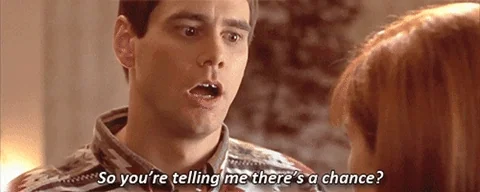Originally published at: Micrometeoriod strikes cause "significant uncorrectable change" to the Webb Space Telescope | Boing Boing
…
What a shame ![]()
Buffing it out is easy, but the service call is expensive!
in the headline shouldn’t it be ROID and not RIOD?
Not terribly important, but amusing: Shutterstock made an interesting artistic choice with this illustration, considering it was a million miles away from earth before it was in this configuration.
Obviously this was a counter-surveillance strike by unknown enemies in one of those thousand or so galaxies we took a picture of.
That’s not Earth. This is an unintentionally released top secret photo of a stealth Death Star. The JWST has a secret double mission to photograph it. The info wasn’t supposed to get out, but you know how hard it is to keep secrets like that.
Great now we have bird strikes in space. Space birds that are still not real even though these “birds” come from an alien government.
Hurry up with the pictures already!
Hmmm. IMO, this might be one of the few times where Betteridge’s law does not apply.
The significant extension to the JWST service life may not come true.
Let’s hope not.
Astronomers have been dealing with these incidents for a while now.
These aren’t the ROIDs you’re looking for.
The article seems to agree.
“Already we have stood on the shoulders of giants like the Hubble and Spitzer space telescopes, and seen farther,” John Mather, a senior project scientist for the JWST at NASA’s Goddard Space Flight Center, said in a statement. “We have seen distant galaxies, as they were when the universe was less than a billion years old, and we’re just beginning the search. We have seen galaxies colliding and merging, revealing their chemical secrets.”
…
“We know the Webb images will rewrite our textbooks, and we hope for a new discovery, something so important that our view of the universe will be overturned once again.”
I want to see a massive radio telescope in space. The “mirror” for a radio telescopes can have many significant holes and work just fine. Plus JWST has proven complex shapes of fabric can be unfolded in space after launch.
I doubt any insurance company was willing to offer comprehensive coverage so we can only hope it lasts a nice long while.
A joke, I know; but I suspect that buffing one of these out would suck.
You’ve got the structural component, a sheet of beryllium with stiffening ribs(at least the risk of dust inhalation is probably pretty low in a space suit), 100nm of gold; and a protective silicon dioxide layer of unspecified thickness.
Any attempt to buff would probably toast the coating and set you back to the fine polishing step; once you’d done that and re-flattened everything it would then be left as an exercise for the reader to set up vacuum vapor deposition of a new gold/silicon dioxide coating, in space, without perturbing the other mirror elements or damaging the focusing actuators.
Anyone who could pull that off would definitely deserve the Golden Slide Rule for audacity in engineering, with distinction; but it would be a deeply nontrivial operation.
Both are cool but the moon based one is more appealing to me. Thanks for the links!


